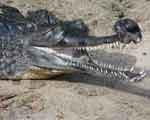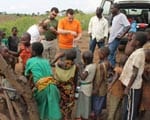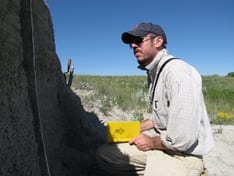Immigrants in North Texas develop American identity by participating in ethnic community activities, then branching out to broader civic and political life
Whether contributing money to Boy Scouts, donating a statue of Gandhi for a Dallas city plaza, or successfully lobbying against flying Vietnam’s communist flag in a citywide international celebration, a new study shows that immigrants in Texas are involved in their communities.
In North Texas, immigrants from India and Vietnam develop and embrace their American identity over time — without shedding their culture of origin, as some say they should, according to a new anthropological study.
The research found that, for these groups, becoming a U.S. citizen is distinctly different from becoming American, say immigration experts Caroline B. Brettell and Deborah Reed-Danahay, the study’s authors.
For new Vietnamese and Indian immigrants, whether naturalized citizens or not, American identity deepens as they participate in activities, festivals and banquets at their churches, schools, temples, business and civic associations, and their social and cultural organizations, say anthropologists Brettell and Reed-Danahay.
The authors cite as an example Andy Nguyen, now a Texan, who fled Vietnam and arrived in the United States as a teenager. As a young man he was commissioned an officer in the U.S. Army Reserve, went on to become a successful North Texas businessman and served primarily as an ethnic community leader. Later Nguyen ran as a Republican and won election to county government.
Caution: Don’t impose formal standards to force integration of immigrants
From their research, Brettell and Reed-Danahay conclude that policymakers should be cautious with any attempts to integrate, assimilate or incorporate immigrants. They recommend against imposing top-down standards on how citizenship should be expressed — such as requiring full English proficiency or focusing exclusively on formal political participation.
“A key contribution of our research is its emphasis on the fact that the civic incorporation of newcomers does not necessarily mean abandoning who you are,” says Brettell, an anthropology professor at Southern Methodist University in Dallas.
“Immigrant communities have spaces and places that are already operating as viable arenas for expressing civic and political presence and for becoming American,” she says.
Participants in the three-year study were Indian and Vietnamese immigrants in the twin North Texas cities of Dallas and Fort Worth and surrounding suburbs. The region, known as DFW, is the largest metropolitan area in Texas.
Brettell and Reed-Danahay uncovered how North Texas Vietnamese and Indian immigrants develop their identity as Americans by engaging first within their own communities, where they practice and develop citizenship skills, which they then use in a broader American context.
“We view citizenship as the ways in which immigrants participate in the civic and political life of America,” Brettell says, “so they move over time from the periphery to the core of American civic and political life.”
Authors carried out three years of oral interviews and direct observation
Brettell and Reed-Danahay report the study results in their book, “Civic Engagements: The Citizenship Practices of Indian & Vietnamese Immigrants” (Stanford University Press, 2012).
The authors interviewed 67 first-generation Indian and Vietnamese parents, many but not all of whom are naturalized U.S. citizens. They also interviewed college students in their early to mid-20s whose parents were immigrants from either India or Vietnam and who either were born in the United States or arrived as young children.
The anthropologists asked participants what it means to them to be American, Indian, Vietnamese and Asian. They also asked about citizenship and participation in political, religious and civic activities.
The authors also conducted participant observation at a variety of community events, including voluntary association meetings, fundraising and other banquets, ethnic festivals, religious ceremonies, youth group meetings and political protests.
Dallas-Fort Worth region and Texas are a unique immigrant gateway
The number of foreign-born individuals has dramatically increased in Texas during the past 40 years as the state’s economy has boomed and diversified beyond oil. Both Texas and DFW attract highly skilled and well-educated immigrants to the telecommunications, health, education, transportation and financial industries.
After Mexicans and Salvadorans, Indians and Vietnamese are the largest groups of immigrants in DFW. The 2000 Census counted 47,090 foreign-born Vietnamese and 49,669 foreign-born Indians in DFW.
Brettell and Reed-Danahay found that for the most part both Indian and Vietnamese immigrants to the region first arrived elsewhere in the United States, then moved to DFW, often settling in suburbs.
Typically, Indian immigrants came voluntarily, seeking education, jobs and economic opportunity, although some came to join family members. Generally they have high levels of education and income, and typically already speak English, says Brettell, who conducted the Indian research.
Vietnamese came as refugees, primarily to escape communism and in search of freedom and democracy. More recently they’ve also come to join family members, says Reed-Danahay, who conducted the Vietnamese research.
On the surface there are a great many differences between these two Asian immigrant populations, say the authors. But the anthropological research revealed significant similarities in the way immigrants from both India and Vietnam engage in civic and political activities.
The researchers also found that homeland politics drives Vietnamese political activities among the first generation much more than it does those of Indians. Immigrants from India attempt to downplay the regional and religious diversity that is often divisive in their homeland.
“It was very moving to get to know Vietnamese who were former refugees who had suffered so much during and after the war,” says Reed-Danahay. “And yet it was a significant finding of this study that despite the hardships of their experiences, the first generation and subsequent generations are participating in American institutions and taking leadership roles in the same ways as are Indians who arrived primarily as economic migrants.”
Immigrants report their American identity shifts, depending on context
Despite a desire to belong and overcome feelings of otherness, Indian and Vietnamese immigrants reported that fellow Americans sometimes exclude them on the basis of their accent, their skin color and their ethnic characteristics. Many Vietnamese reported prejudice in the United States against Asians.
While there hasn’t been any sweeping anti-immigrant legislation in Texas such as in California, there have been a number of bills proposed at the state level aimed at illegal immigration, as well as some ordinances at the local level.
“The discourse is so dominated by the issue of illegality that we overlook what a range of immigrants are doing and how they are contributing and becoming Americans, including the increasing importance of Asians in the political process,” Brettell says.
Other findings of the study:
- First-generation immigrants viewed becoming a U.S. citizen distinct from becoming American.
- Situation or context can determine identity, immigrants report. They feel American when they are at work, eating out at McDonald’s, celebrating Thanksgiving, engaged in American sports or politics, traveling with their U.S. passport, and back in their homeland, where they realize they are now different from people in their home country.
- 27 percent of Vietnamese fathers and 36 percent of Vietnamese mothers reported they rarely felt or identified as American, even though 76 percent of Vietnamese parents interviewed had become U.S. citizens. Some expressed that because they don’t look white, they’ll never be considered truly American. Some of the fathers had been soldiers and prisoners of war in their homeland, fleeing because of the Vietnam War.
- More Vietnamese women than Indian women identify as American. Vietnamese women tend to work outside the home, while Indian women often stay at home, charged with sustaining the native culture.
- Among first-generation Indian immigrants, 81 percent of fathers said they at least somewhat commonly identify themselves as American, compared to only 44 percent of mothers.
- First-generation Indians and Vietnamese share ambivalence to the labels Asian and Asian American, citing vast differences between Asian countries, such as those created by historic animosities based on political repression. Their children, however, don’t reject those labels.
- The children of immigrants are beginning to participate more directly in the American political process.
- In DFW there are no clearly defined Vietnamese ethnic settlement enclaves, such as Little Saigon in Orange County, California. There are, however, spaces where immigrants interact, such as strip malls. Print and online ethnic newspapers are also important, particularly for Vietnamese immigrants, while radio media are important to the Indian community.
- While some Americans want immigrants to speak English, the anthropologists found Vietnamese Americans who were sad their children weren’t fluent in Vietnamese.
“Both Indian and Vietnamese immigrants have learned to ‘talk the talk’ of civic engagement,” Brettell says, “as they refer to their ‘teamwork,’ ‘good neighborship,’ ‘giving back’ and ‘entering the mainstream’ — but they shape these to their own actions.” — Margaret Allen
SMU is a nationally ranked private university in Dallas founded 100 years ago. Today, SMU enrolls nearly 11,000 students who benefit from the academic opportunities and international reach of seven degree-granting schools. For more information see www.smu.edu.
SMU has an uplink facility located on campus for live TV, radio, or online interviews. To speak with an SMU expert or book an SMU guest in the studio, call SMU News & Communications at 214-768-7650.
 The topic was Brettell’s research that found immigrants in North Texas develop their American identity by participating in ethnic community activities, then branching out to broader civic and political life.
The topic was Brettell’s research that found immigrants in North Texas develop their American identity by participating in ethnic community activities, then branching out to broader civic and political life.
 Study: Nearly two-thirds of EU citizens are marginalized by English-language dominance
Study: Nearly two-thirds of EU citizens are marginalized by English-language dominance From ‘Green Card’ to ‘Thin Blue Line’: Lawtalk research looks at popular legal expressions
From ‘Green Card’ to ‘Thin Blue Line’: Lawtalk research looks at popular legal expressions
 Public health insurance provides insured infants better, less costly care than private plans
Public health insurance provides insured infants better, less costly care than private plans A mathematical model determines which nations are more stable and which are more likely to break up
A mathematical model determines which nations are more stable and which are more likely to break up Indian, Vietnamese immigrants become American over time through civic activities, say anthropologists
Indian, Vietnamese immigrants become American over time through civic activities, say anthropologists

 SMU to help solve dangerous refugee water issues
SMU to help solve dangerous refugee water issues Anthropology researcher to study human-fire-climate interactions
Anthropology researcher to study human-fire-climate interactions





 To book a live or taped interview with Christopher I. Roos in the SMU
To book a live or taped interview with Christopher I. Roos in the SMU 
